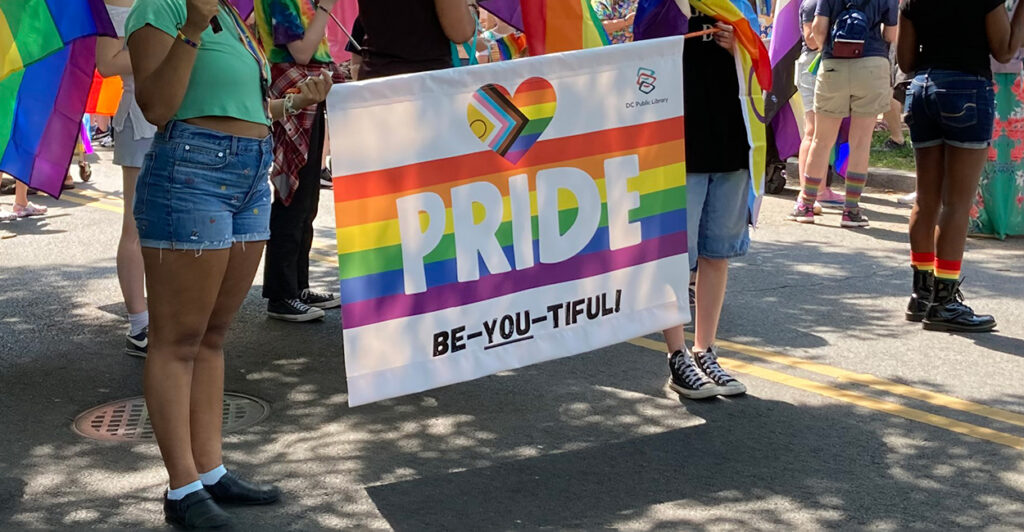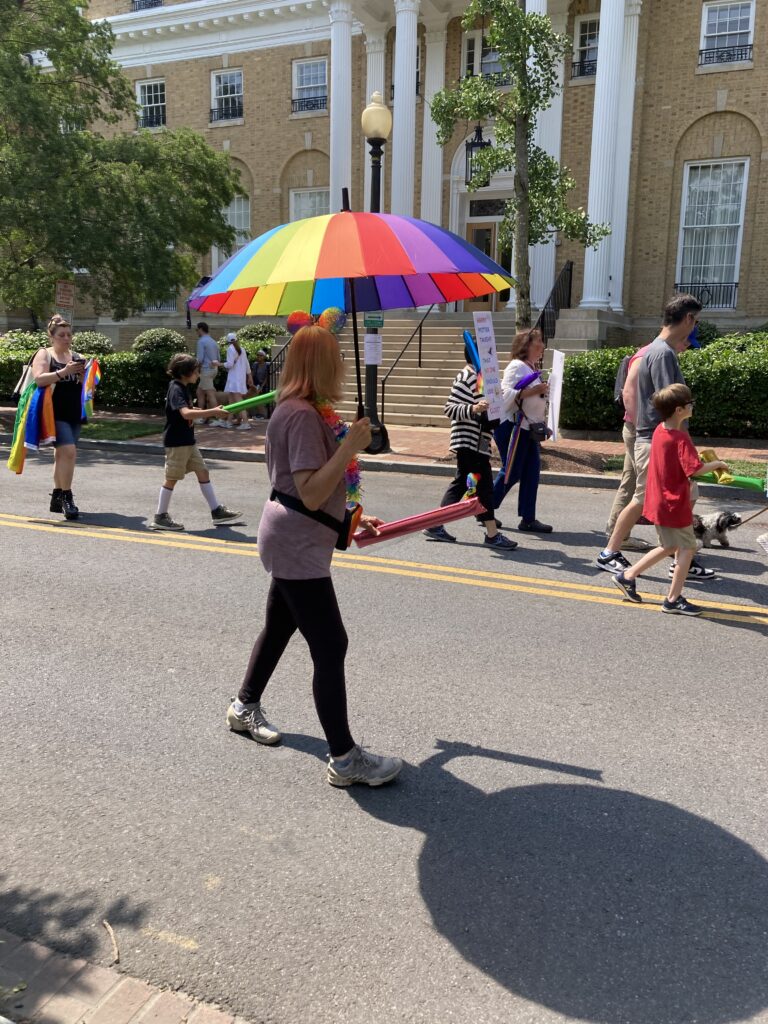5 things I saw at DC Library’s Children’s Pride Parade
(The Daily Signal) – The Children’s Pride Parade held on a sunny Saturday by the D.C. Public Library drew fewer than 100 parents, children, and other adults in a metropolitan area of…

(The Daily Signal) – The Children’s Pride Parade held on a sunny Saturday by the D.C. Public Library drew fewer than 100 parents, children, and other adults in a metropolitan area of 5.5. million.
As I found out, the parade celebrating “LGBTQ Pride” lasted no more than 10 minutes along the third of a mile from the District of Columbia’s Montrose Park to Georgetown Neighborhood Library. A relative few spectators watched as mostly white participants walked the parade route beginning at 11 a.m. to celebrate the “pride” of lesbians, gays, bisexuals, and those who identify as transgender or “queer.”
Some bystanders intentionally attended, but others appeared to watch after coming out of their homes to see who was marching. At times, more police officers lined the streets than spectators.
Rather than stand on sidewalks or curbs as they might during a typical parade, parents and their children marched as part of this parade and made up the bulk of it.
Most of the children present appeared to be of elementary school age; however, I also saw a few toddlers in strollers, as well as a few teenagers. Those teens held the D.C. Public Library’s rainbow parade banner, which read “PRIDE” and “BE-YOU-TIFUL!”

Although flyers from the D.C. Public Library encouraged local schools and groups to participate in the late morning parade, only the Duke Ellington School of the Arts appeared to do so, contributing a banner reading “Art Is Pride.” I couldn’t tell whether an LGBTQ+ color guard was affiliated with the library or another agency or organization.
Afterward, the library’s event included a “Pride festival” behind the Georgetown branch offering games, coloring, popsicles, and an assortment of LGBTQ+ pamphlets.
Here are five things I saw at the Children’s Pride Parade:
1. Just boys and girls. Girls were dressed like girls and boys were dressed like boys. I didn’t see cross-dressing, and the kids acted like typical boys and girls.
It was the teenagers, parents, and other adults who decked themselves in rainbow Pride gear.

2. Mostly modest clothing and costumes. Unlike Pride parades in which participating men and women wore no shirts or only leather straps, I didn’t see anyone dressed inappropriately around the children—except for one individual who appeared to be a young adult wearing a silver skirt with a pink shirt reading: “Dreaming of Women.”
After the parade, one of the bookmarks the children could color at the Pride festival featured a caricature of celebrity drag queen and entertainer RuPaul and a quote from his 2014 song “Born Naked”: “We’re all born naked and the rest is drag.”
Most of the other bookmarks featured unicorns and the phrase “BE-YOU-TIFUL!”

3. Message: Accept LGBTQ+. The parade and festival weren’t shy about pushing the LGBTQ+ agenda on children in attendance, I noticed.
Messages included homemade signs that read “Harry Potter Taught Us That No One Should Live in a Closet” and adults in shirts that read “Please Respect Unity and Love.”

The children seemed to be less interested in what the adults were trying to teach them, however, than they were simply fascinated with all the bright colors and an inflatable unicorn about 5 feet high.
However, an assortment of informational pamphlets was available after the parade on the various pronouns, identities, and flags within the LGBTQ+ world, as well as booklets on how to accept LGBTQ+ family and friends.

4. Prepared for trouble. Behind the scenes, some adults held rainbow umbrellas and prepared a game plan to counter any protesters.
I discovered, while standing on a sidewalk, that these rainbow umbrellas served as a rallying point in case protesters arrived to challenge the event. Multiple police officers lined the sidelines, but I didn’t see any protesters.

5. Promoting LGBTQ+ children’s books. The D.C. Public Library plastered carts with several posters designed to promote LGBTQ+ books available inside.
These pro-LGBTQ+ books included one called “The Meaning of Pride” and a picture book titled “It Feels Good to Be Yourself: A Book About Gender Identity.” Inside the library, by the front desk, a Pride table displayed an assortment of books for children.



